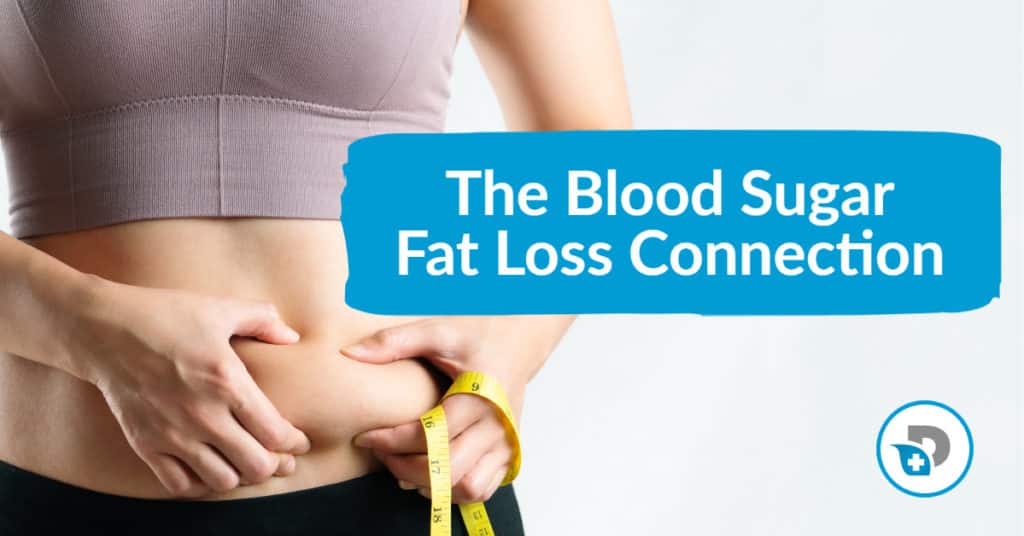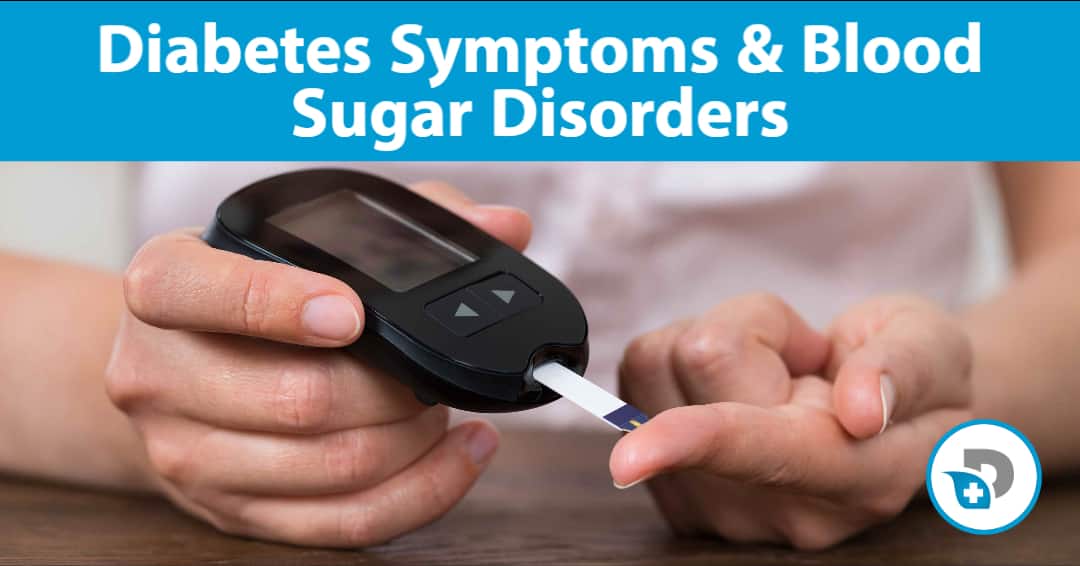
Diabetes Symptoms & Blood Sugar Disorders
- by Dr. Daniel
- Published on

One billion people around the world now suffer from diabetes and obesity combined.
Obesity in adolescence has quadrupled in the past 30 years, and now almost 20 percent of kids ages six to eleven are obese.
Studies have shown that becoming overweight is a major risk factor in developing type 2 diabetes.
Type 2 diabetes is a growing epidemic with 100 million US adults living with diabetes and 84.1 million having prediabetes. [1]
These numbers are only continuing to rise, with a shocking one-third of U.S. adults projected to have diabetes by 2050. [2]
If current trends continue, in two decades, 95 percent of Americans would be overweight and one in three would have diabetes.
Now, the consequences of this disease epidemic are profound. It’s been estimated that the cost of diabetes alone is $250 billion a year.
To put that in perspective… The World Health Organization estimates that it would cost $200 Billion to end world hunger.
All that said, blood glucose disorders and diabetes is also the world's fastest growing chronic disease!
Let's discuss the most common signs of symptoms of prediabetes, type 2 diabetes and how to check your own glucose levels to prevent the development of these conditions.
Prediabetes Symptoms
You can have prediabetes for years without any clear symptoms, so it often goes undetected until serious health problems show up.
For this reason I would suggest a comprehensive blood chemistry panel for anyone with the following risk factors:
- Being overweight
- Being 45 years or older
- Having a parent, brother, or sister with type 2 diabetes
- Being physically active less than 3 times a week
- Ever having gestational diabetes (diabetes during pregnancy) or giving birth to a baby that weighed more than 9 pounds
Most people have had their blood glucose levels checked from an annual routine blood chemistry.
But serum glucose is not enough to know whether or not your glucose levels are healthy.
This is why I suggest getting the following glucose biomarkers when undergoing an annual exam:
- Serum Glucose
- Hemoglobin A1C
- Insulin
- Leptin
- C-Peptide
- Fructosamine
Here's 3 easy methods of assessing pre-diabetic status:
1. Fasting Blood Glucose (FBG)
Fasting blood glucose is a measure of your blood sugar first thing in the morning before eating or drinking anything.
I would define a normal range for fasting blood glucose as 75 – 105 mg/dL with optimal ranges being 75-85 mg/dl.
Although 100 mg/dl is considered the cutoff for normal, studies have shown that fasting blood sugar levels in the mid-90s were predictive of future diabetes a decade later.
If your fasting blood glucose is consistently greater than 125 mg/dl, you could have prediabetes!
2. Post-Prandial Blood Glucose (PPBG)
Post-prandial blood glucose is a way to see how your body responds to various foods that you're consuming.
In short, you measure your blood sugar 1-2 hours after a meal.
Several studies have shown that post-prandial blood glucose is the most accurate predictor of future diabetic complications and is the first marker (before fasting blood glucose and Hb1Ac) to indicate dysglycemia.
Normal post-prandial blood sugar one to two hours after a meal is 120 mg/dL. Most normal people are under 100 mg/dL two hours after a meal. [4]
If your post-prandial blood glucose is consistently greater than 120 mg/dl two hours after you have eaten, you could have prediabetes!
3. Hemoglobin A1c (HbA1c)
This test measures the percentage of hemoglobin to which sugar has bonded due to chronically elevated blood sugar.
It reflects your average blood sugar over the past three months.
A healthy range for HbA1c is between 4.6 and 5.3 percent.
Unfortunately, this test can be unreliable in individuals and should be compared with other biomarkers such as fasting insulin, fasting leptin, HOMA-IR, fructosamine, and triglycerides.
According to the American Diabetes Association, a diagnosis of prediabetes occurs when: [5]
- fasting blood sugar levels are greater than 125 mg/dl
- Post-prandial blood sugar is greater than 140 mg/dl 2 hours after a meal
- A1C test is between 5.7–6.4 percent
10 Early Signs of Type 2 Diabetes
Aside from the fact that we should be assessing our glucose status to determine Pre-Diabetes potential.
It's estimated that millions of Americans are already diabetic and have no clue.
Here's the top 10 early warning signs of Type 2 Diabetes:
1. Frequent Urination
When blood sugar levels are high, the kidneys try to remove the excess sugar by filtering it out of the blood. This can lead to a person needing to urinate more frequently, especially at night.
2. Increased Thirst
The frequent urination that is necessary to remove excess sugar from the blood can result in the body losing additional water. Over time, this can cause dehydration and lead to a person feeling more thirsty than usual.
3. Always Feeling Hungry
People with diabetes have dysfunctional metabolism. This means it's much harder for them to get the energy they need from the food the eat. As a result, people with type 2 diabetes often feel constantly hungry, regardless of how recently they have eaten.
4. Fatigue or Feeling Tired
Type 2 diabetes can impact energy levels and cause people to feel very tired or fatigued. This tiredness occurs as a result of insufficient sugar moving from the bloodstream into the body's cells.
5. Blurred Vision
Excess sugar in the blood can damage the tiny blood vessels in the eyes, which can cause blurry vision. This blurry vision can occur in one or both of the eyes and may come and go.
6. Slow Healing Capacity
High levels of sugar in the blood can damage the body's nerves and blood vessels, which impairs wound healing. As a result, even small cuts and wounds may take weeks or months to heal.
7. Tingling, Numbness and Pain in the Hands and Feet
High blood sugar levels damage the tiny blood vessels and nerves in the hands and feet. This can lead to numbness and pain and tingling known as peripheral neuropathy.
8. Patches of Dark Skin
Patches of dark skin that form along the creases of the neck, under arms and groin areas are a signal of type 2 diabetes. This symptom is known as acanthosis nigricans.
9. Itching and Yeast Infections
Excess sugar in the blood and urine increases the instance of fungal overgrowth and yeast infections.
10. Skin Tags
Research suggests that people with diabetes are more likely to develop skin tags than others.
How to Check Your Own Glucose Levels
While the methods for measuring blood sugar in the clinical setting have their place, they do not reflect how your body responds to glucose in the foods you eat.
To better understand which carbohydrate-containing foods your body tolerates best and which ones cause unhealthy blood sugar swings, you’ll need to test your blood sugar at home.
The first step in testing your blood sugar at home is to buy a glucometer, such as the OneTouch Ultra Monitors.
You will also need to purchase glucose test strips and a lancet (to prick your finger).
Once you have a glucometer and test strips, follow these steps to test your glucose tolerance in response to foods:
- Test your blood sugar first thing in the morning. Drink a little bit of water just after rising, but don’t eat anything or exercise before the test. The measurement you obtain at this point is your fasting blood sugar level.
- Test your blood sugar again just before lunch.
- Eat your typical lunch and test your blood sugar one hour, two hours, and three hours after. Do not eat anything during this three-hour post-lunch period.
- Record your blood sugar results, along with what you ate for lunch.
- Repeat this practice the following day. The blood sugar measurements you gather will tell you how the foods you usually eat influence your blood sugar levels.
- On day three, follow steps 1 and 2, but at step 3, instead of eating your typical lunch, consume 60 to 70 grams of fast-acting carbohydrates, such as an eight-ounce boiled potato or a cup of cooked white rice. Fast-acting carbs quickly break down and release glucose into your system. For the purposes of this test only, avoid eating any fat or protein with the potato or rice because it will delay the absorption of glucose.
- After your carbohydrate-rich meal on day three, record your blood sugar results.
The goal here is to make sure that your blood glucose doesn’t consistently rise higher than 140 ng/mL an hour after a meal but does steadily drop to 120 ng/mL two hours after eating and returns to baseline three hours post-meal
As for fasting blood sugar, measurements in the 80s or low 90s are best.
If you see some readings in the mid to high 90s, don’t panic. You'll want to experiment with the foods you're eating and see if this has an impact on your glucose levels.
If all other biomarkers (fasting insulin, fasting leptin, fructosamine, and triglycerides) are normal, this isn’t cause for concern.
But if you find that your glucose levels are constantly elevated, you might want to start working with a Functional Medicine Doctor to get it under control!


